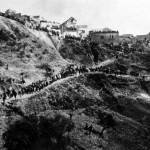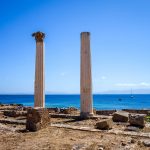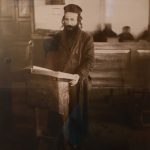What prompted a century of American Jews to omit the phrase “Next year in Jerusalem” at the conclusion of their Seder? The aspirations and declarations replacing it speak volumes about American Jewish loyalties, priorities, and conflicts, as does the timing of its reappearance in American haggadot
“Le-shana ha-ba’a bi-Yerushalayim – Next year in Jerusalem.” This text isn’t a prescribed, codified element of any liturgy – not at the end of Yom Kippur, and not at the conclusion of the haggadah, though arguably among the most powerful moments of each. Yet this expression of yearning for Zion carries vast popular appeal. These words have engraved the memory of Jerusalem upon the Jewish mind. They’ve nurtured the hope that someday Jews would return to the holy city and rebuild it anew. Recited in unison by all present at key moments in the Jewish life cycle, this formula has inspired the faithful, stirred passions, steeled hearts.
Nevertheless, the first significant American haggadah to include the pithy phrase “Next year in Jerusalem” appeared only in 1942. Prior to that, for just over a full century, even if Hebrew-English haggadot published in the United States included the three Hebrew words Le-shana ha-ba’a bi-Yerushalayim, they avoided its four-word English equivalent. “Next year in Jerusalem” was taboo.

A Phrase to Forget
The phrase and its variations have a long history. It served initially as a popular response, like “Amen” or “Blessed be He,” and parallels another once common, even older liturgical refrain that recalled the sacred memory of the lost Temple, “Ke-ha-yom hazehbi-Yerushalayim” (“as in this day – in Jerusalem”). Before the age of printing, Jews spontaneously chorused these words at family occasions or at the end of ceremonies such as that of blessing the new moon and reading the Torah or the scroll of Esther. Gradually it penetrated the liturgy, appearing in the Yom Kippur prayers and the Pesach haddadah in about the 10th century. As Prof. Shulamit Elizur of the Hebrew University of Jerusalem has ably demonstrated, these sentiments entered both the high holiday prayer book and the haggadah as heartfelt expressions of the hope of celebrating Passover in the rebuilt Temple in Jerusalem in the following year.







